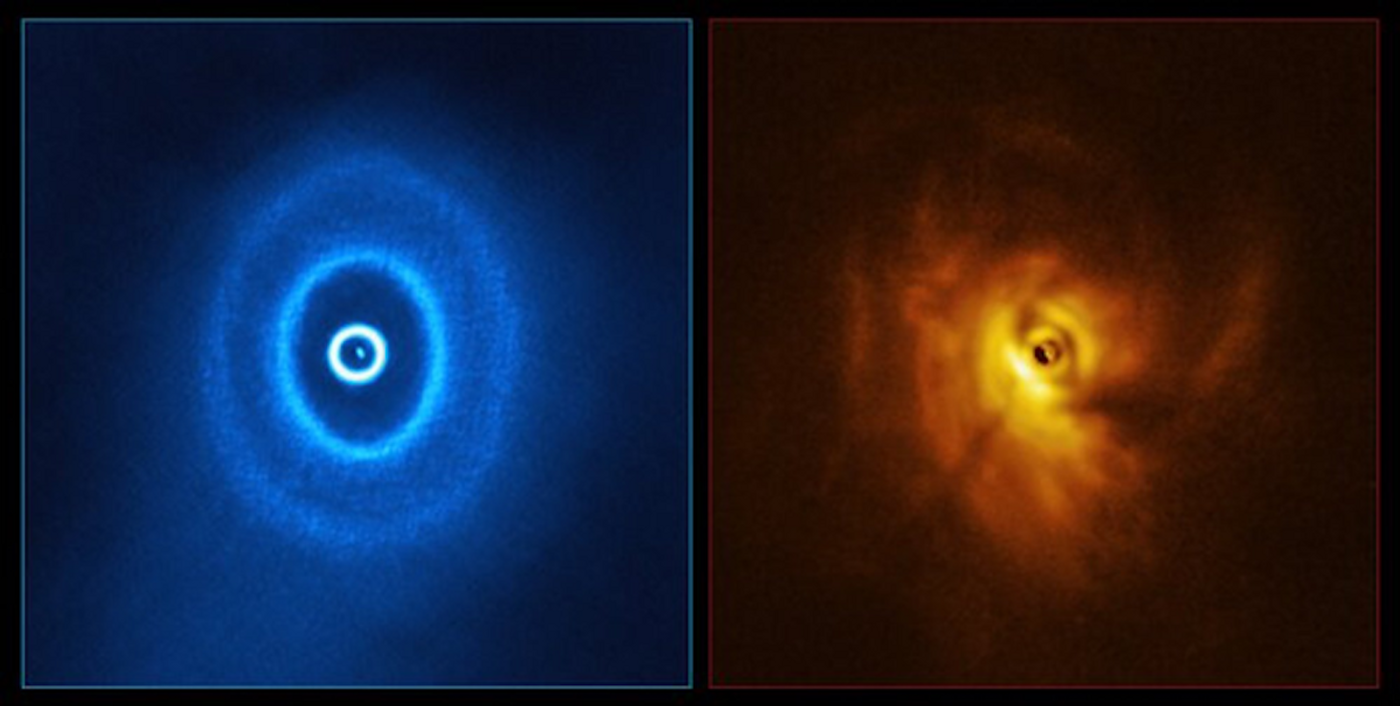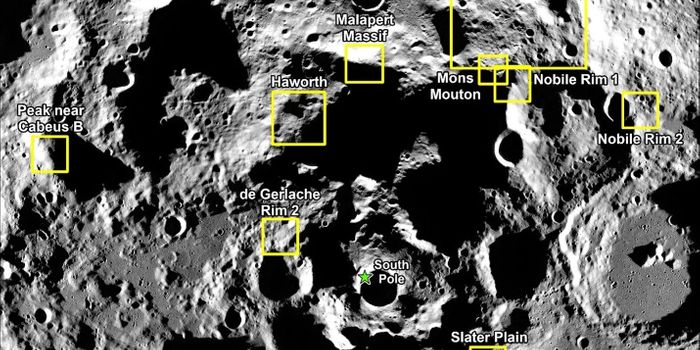In a First, Researchers Find a Planet Orbiting Three Stars
Scientists were mystified by images obtained from Atacama Large Millimeter/submillimeter Array (ALMA) telescope, which seemed to show three rings of dust circling three stars about 1,300 light years from earth. The dust rings are part of the planet-forming process, but there was an unusual and large gap in the circumtriple disc.
Researchers have now suggested that this observation of a system called GW Orionis is the first known detection of a planet orbiting three different stars. The findings have been reported in the Monthly Notices of the Royal Astronomical Society. In the images above, provided by ALMA (Credit: ALMA (ESO/NAOJ/NRAO), ESO/Exeter/Kraus et al.), the ringed structure of the disc, with an inner ring separated from the remainder of the disc, is shown on the left. On the right, the inner ring can be seen casting a shadow on the rest of the disc.
While there is only one star in our solar system, it's been suggested that about half of star systems contain two or more stars that are gravitationally linked to one another.
Different theories were investigated by the research team, such as whether the three stars are exerting a gravitational torque that generated that gap. But when a complete model of GW Orionis was created, the scientists came to a different conclusion. They found that it's more likely that the gap in the discs is caused by one of more massive planets, which might be gas giants like Jupiter.
Usually, gas giants form first in a star system, and terrestrial planets are created later, explained lead study author Jeremy Smallwood, Ph.D.
Unfortunately, this massive planet can't be directly observed at this time. However, additional work from the ALMA telescope may produce that data, and give us direct evidence of a three-star system with a gas giant.
“It’s really exciting because it makes the theory of planet formation really robust,” Smallwood said. “It could mean that planet formation is much more active than we thought, which is pretty cool.”
Sources: University of Nevada, Las Vegas, Monthly Notices of the Royal Astronomical Society









